Shah Jahan's four sons and three daughters She was His eldest daughter Jahanara Was. Darashikoh Shah Jahan's eldest son who lived near him. Shah Shuja was the second son of Shah Jahan, who was in Bengal. Roshanara was the second daughter of Emperor Shah Jahan. Aurangzeb Shah Jahan's third son was the one who looked after the administration of the South. Murad Baksh was the youngest son of Shah Jahan, who looked after the governance of Gujarat. Shah Jahan's third daughter was Gauharara who was Mumtaz's fourteenth child Was. At the time of Shah Jahan's illness, Darashikoh was forty three years old, Shah Shuja forty one, Aurangzeb forty nine and Murad Baksh thirty three years old.
Darashikoh
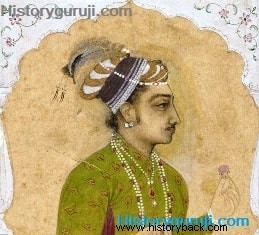
Subedar of Darashikoh Punjab Was and mostly remained in the capital near Shah Jahan was. Shah Jahan believed in Darashikoh and wanted to make him his successor. Darashikoh had the qualities of learning and religious generosity. Due to his liberal nature and pedantic tendency, Darashikoh wanted to collect the essence of all the philosophies. He studied the principles of Vedanta, Talmud and Bible and the works of Sufi writers.
Darashikoh got the Atharvaveda and Upanishads translated into Persian with the help of Brahmin pundits. He was a supporter of the policy of sulh-i-kul. Darashikoh's goal was to find a basis for harmony among all religions, which turned his staunch co-religionists against him.
But Darashikoh was not a hypocrite and never abandoned the basic tenets of Islam. He only showed the universal collectivist tendency of the Sufis, which was an accepted ideology of the Islamists.
Shahshuja
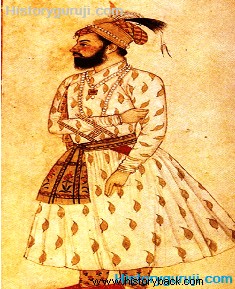
The wise Shah Shuza was a very ambitious prince. He Subedari of Bengal was found. He was a brave, courageous and efficient administrator, but because of his comfort he was weak, lazy, inattentive.
Aurangzeb
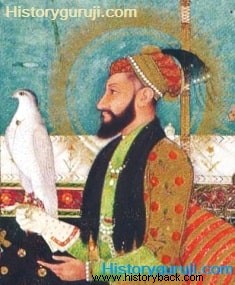
Aurangzeb was born on 3 November 1618 in Dahod, Gujarat Happened in. He is sixth child and third son of Shah Jahan and Mumtaz Mahal was. During his father's time he was Subedar of Gujarat was. Aurangzeb was endowed with extraordinary industry and intense diplomatic and military qualities. He had an unquestionable ability to rule and, as an ardent Sunni Muslim, he was supported by staunch Sunnis. Darashikoh was insignificant in comparison to the sly and intelligent Aurangzeb. Shah Shuja and Murad Baksh were also nothing in front of Aurangzeb's general and cleverness.
muradbakhsh
Shah Jahan's youngest son Murad Baksh is a staunch Sunni Muslim was. He was given the Subedari of Gujarat, but he was a big drinker, so he could not develop the necessary qualities of leadership.
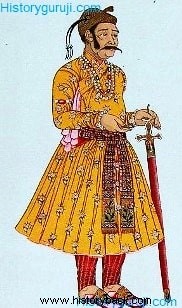
Shah Jahan's disease
In September 1657, Shah Jahan fell seriously ill and rumors spread that Shah Jahan had passed away. Of the four brothers, only Darashikoh was in Agra, so at the time of illness, Shah Jahan handed over the empire to his eldest son, Darashikoh. Darashikoh's three absent brothers suspect that their father is actually dead and Darashikoh has suppressed the news to take the throne.
Cause of Succession-War
As soon as Shah Jahan was alive, a struggle for succession broke out among his four sons. But this war fought for the succession of the emperor was the first instance of the Mughal period. All the princes who participated in the war of succession were the children of the same mother Mumtaz. Many reasons were responsible for this war of succession between the sons of Shah Jahan-
Lack of definite rule of succession
The Mughals, like the Delhi Sultans, did not have a fixed rule of succession and could be ruled by the sword. After the death of the emperor, it became a tradition to have a war of succession. Therefore, the war for succession among the sons of Shah Jahan was not new.
Ambition of Shah Jahan's sons
All the sons of Shah Jahan were highly ambitious and eager to achieve the throne. There was no dearth of valor and resource among his sons as they were acting as rulers of one or the other region. Not only this, all the sons of Shah Jahan also had their own armies and they did not consider themselves inferior in any situation.
characteristic differences and mutual hatred
Shah Jahan's four sons were of different nature. Due to the difference in character, there was a feeling of envy and jealousy among the sons of Shah Jahan. Shah Jahan loved his eldest son Darashikoh more, due to which his brothers were jealous of him even more. When Shah Jahan handed over the charge of the empire to Darashikoh, the faith of the other brothers was further confirmed that Shah Jahan wanted Darashikoh to be the emperor.
Shah Jahan appoints Darashikoh
Shah Jahan loved Darashikoh very much. On his illness, Shah Jahan proposed to his trusted amirs to appoint Darashikoh as his successor. He increased the mansabdari of Dara from 40,000 to 60,000 and announced that Darashikoh should be given the honor of emperor. It was natural that other sons would react against this unilateral and partisan decision.
Dara's Suspicious Conduct and Charge
Darashikoh became arrogant because of Shah Jahan's love and Roshanara's support. When Shah Jahan fell ill, Darashikoh barred anyone from meeting Shah Jahan and closed all routes to Bengal, Gujarat and Bijapur in the south so that the other brothers could not get information about Shah Jahan's illness. This suspicious behavior of Darashikoh caused suspicion among his brothers and they entered into a war of succession.
internal conspiracy and factionalism
Shah Jahan's three daughters JahanAra, RoshanAra and Gauharara She was very clever and expert in plotting. Jahanara favored Darashikoh and wanted him to be made the Mughal emperor, while Roshanara supported Aurangzeb. Watching Gauhraa Muradbakhsh as Padshah wanted.
The nobles and chieftains of the Mughal court also created a situation of struggle for the fulfillment of their selfish interests. Hardcore Sunni Muslims used to instigate Aurangzeb on the one hand and liberals supported Darashikoh. The Shia Muslims wanted to see Shah Shuja as the emperor. Thus the Mughal court became a hotbed of conspiracies and a war of succession became inevitable.
Events of Succession-Battle
Murad was the first to declare himself emperor in Ahmedabad on 5 September 1657 AD on receiving information about Shah Jahan's illness and Darashikoh's successor done. Similarly, Shah Shuja declared himself emperor in the then capital of Bengal, Rajmahal and marched towards Agra with an army.
But this time Aurangzeb, cautiously and diplomatically, tried to get Murad and Shah Shuja on his side. Aurangzeb wrote a letter to both the brothers- Murad Baksh and Shah Shuja that the kingdom would be divided among themselves after defeating Dara.
Bahadurpur Battle
Shah Jahan appointed Darashikoh's son Sulemanshikoh, Mirza Raja Jai Singh and Diler Khan to control Shah Shuja's activities. On reaching near Banaras, in Bahadurpur on 24 February 1658 AD Shah Shuja and the Shahi army A war ensued, in which Shah Shuja was defeated and he was forced to return to Bengal.
Murad-Aurangzeb treaty
Murad Bakhsh his coronation on 5th December, 1657 AD in Ahmedabad had done In Malwa, Aurangzeb made an agreement with Murad Baksh and after the conquest decided to divide the empire. In the Ahadnama (agreement) that was made between Aurangzeb and Murad Baksh, Dara was called Rais-l-Mulahida (the wicked prince). 'Ahadnama' (Agreement) of Aurangzeb and Murad Baksh It was approved in the name of Allah and the Prophet according to which-
- One-third of the looted goods will go to Muradbakhsh and two-thirds to Aurangzeb.
- Punjab, Afghanistan, Kashmir and Sindh would go to Murad Baksh after the conquest, where he would issue his coins and proclaim his name as the emperor.
Thus Muradbakhsh and Aurangzeb made a joint plan to confront the imperial army.
Darashikoh on receiving information about his brothers' hostile activities, appointed Raja Jaswant Singh and Qasim Khan of Jodhpur to suppress them.
War of Dharma
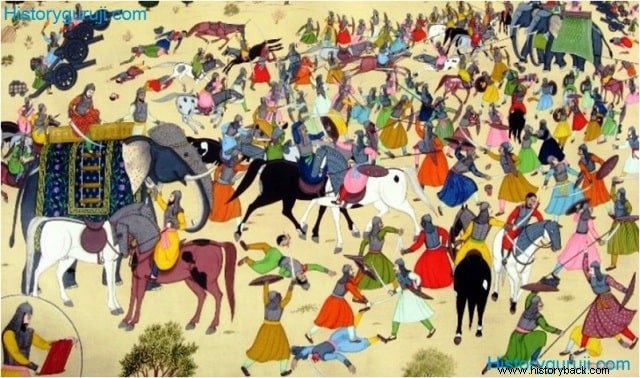
The combined armies of Aurangzeb and Muradbakhsh Battle of Dharmat on April 15, 1658 He defeated the royal army of Jaswant Singh of Jodhpur and Qasim Khan. Jaswant Singh fled to Jodhpur, where his wife got the gates of the fort closed for him because of his escape from the battlefield. Aurangzeb's prestige was increased by the war of Dharamat and Dara's weakness was exposed.
Battle of Samugarh
On receiving information about the defeat of the royal army in the battle of Dharamat, Darashikoh took a huge army and reached Samugarh, eight miles east of the fort of Agra. The combined armies of Aurangzeb and Muradbakhsh fought in the plain of Samugarh on 29 May 1658. The royal army of Darashikoh was defeated.
The Battle of Samugarh and the defeat of Dara practically decided the war of succession between Shah Jahan's sons. In fact, Aurangzeb's right on the throne of Hindustan was a logical result of his victory at Samugarh.
Aurangzeb's right over Agra
After the conquest of Samugarh, Aurangzeb reached Agra with his army and captured Agra on 8 June. Aurangzeb imprisoned his father Shah Jahan and put him in jail and snatched all the rights of the emperor from him. After capturing Agra on June 13, 1658, Aurangzeb moved towards Delhi to pursue Darashikoh.
The End of Wish
Aurangzeb also tried to get rid of Murad Baksh. Aurangzeb sent a horse and 20 lakh rupees to Murad Baksh and invited him to a feast in Mathura. When Murad Baksh was having a meal with Aurangzeb at Rupnagar near Mathura, Aurangzeb took him captive in an intoxicated state. In January, 1659, Murad Baksh was brought to the Gwalior Fort, where he was hanged on December 4, 1661, for the murder of Diwan Ali Naqi. Aurangzeb on 21st July, 1658 AD as emperor, took over the throne of Delhi. Done.
Battle of Khajwa
Shahshuja fled to Bengal after being defeated in the battle of Bahadurpur. When Aurangzeb advanced towards Punjab while pursuing Darashikoh, Shah Shuja started making military preparations at a place called Khajwa to capture Agra. On receiving information, Aurangzeb defeated Shah Shuja at Khajwa near Allahabad on January 5, 1659. done.
Mir Jumla defeated Shah Shuja at Khajwa Following West Bengal to Dhaka and from there to Arakan in May, 1660 AD did. Perhaps the Arakanites murdered Shah Shuja along with his family. Shahzada Muhammad, the eldest son of Aurangzeb, had joined Shah Shuja for some time after fighting Mir Jumla, but he got his punishment in the form of imprisonment for life (death in 1676 AD).
The End of Suleiman Shikoh
Dara's son Suleiman Shikoh was running from place to place. Finally Suleiman Shikoh along with his family and followers took refuge in the hills of Garhwal with a Hindu king.
Aurangzeb, the king of Garhwal Suleiman on December 27, 1660 AD under the pressure of was deceitfully handed over into the hands of the enemies. Finally, in May, 1662, Suleiman Shikoh was sent to the next world.
War of Devrai
Darashikoh reached Gujarat via Lahore from Delhi after Aurangzeb conquered Agra and captured Shah Jahan. Darashikoh was summoned by Jaswant Singh, whom Aurangzeb had already sided with, promising to help him proceed towards Ajmer, but the Rajput hero reneged on his promises. As a result, Darashikoh was accompanied by Aurangzeb in the valley of Devrai for three days (April 12-14, 1659 AD) Had to fight.
Darashikoh was defeated in the battle of Devarai and had to flee to defend himself. जून, 1659 ई. में दाराशिकोह ने दादर के अफगान नायक जीवन खाँ से शरण की प्रार्थना की।
अविश्वासी अफगान नायक ने दाराशिकोह, उसकी दो पुत्रियों और दूसरे पुत्र सिपिह शिकोह को बहादुर खाँ, जिसे दारा की पीछा करने के लिए औरंगजेब ने नियुक्त किया था, को सौंप दिया। बहादुर खाँ दाराशिकोह और उसके परिवार को बंदी बनाकर 23 अगस्त, 1659 ई. को दिल्ली ले आया। औरंगजेब ने 29 अगस्त को दाराशिकोह को एक गंदे हाथी पर बिठाकर संपूर्ण नगर में घुमाया और अपमानित किया।
दाराशिकोह का अंत
न्यायाधीशों के एक कोर्ट ने 30 अगस्त को दाराशिकोह पर काफिर होने का आरोप लगाकर उसे मृत्युदंड दिया। दाराशिकोह के सिर को काटकर उसके शव को दिल्ली की सङकों पर घुमाया गया और अंत में उसे हुमायूँ के मकबरे में दफना दिया गया। दारा के साथ हुए इस अपमान-जनक व्यवहार के चश्मदीद गवाह बर्नियर ने लिखा है कि ‘विशाल भीड़ एकत्र थी, सर्वत्र मैंने लोगों को रोते-बिलखते तथा दारा के भाग्य पर शोक प्रकट करते हुए देखा।’
औरंगजेब ने दाराशिकोह के कनिष्ठ पुत्र सिपिह शिकोह और मुरादबख्श के पुत्र एजिद्बख्श को भयानक प्रतिद्वंद्वी नहीं माना और उन्हें जीवनदान दे दिया। बाद में सिपिह शिकोह और एजिद्बख्श का क्रमशः औरंगजेब की तीसरी और पाँचवीं पुत्रियों के साथ विवाह हो गया।
औरंगजेब का राज्याभिषेक
औरंगजेब का दो बार राज्याभिषेक किया गया- पहली बार आगरे पर अधिकार करने के शीघ्र बाद 21 जुलाई, 1658 ई. को ओर दूसरी बार खजवा तथा देवराई की निर्णयात्मक विजयों के बाद जून 1559 ई. में, जब उसके नाम से खुतबा पढ़ा गया। औरंगजेब ने आलमगीर की उपाधि धारण की, जिसमें बादशाह और गाजी भी जोड़े गये।
शाहजहाँ की मृत्यु
औरंगजेब के राज्यारोहण के बाद शाहजहाँ को 8 वर्ष आगरे के किले में कष्टप्रद बंदी जीवन व्यतीत करना पड़ा। बंदी जीवन के दौरान शाहजहाँ की एकमात्र सहारा उसकी बेटी जहाँआरा थी। अंततः शाहजहाँ ने 22 फरवरी 1666 ई. में अंतिम साँस ली। शाहजहाँ के मृत शरीर को उसकी पत्नी मुमताज महल की कब्र (आगरा) के समीप दफना दिया गया।
उत्तराधिकार का युद्ध और धार्मिक मामले
शाहजहाँ के पुत्रों के बीच उत्तराधिकार के युद्ध को मुगलों की धार्मिक नीति का एक निर्णायक मोड़ माना जाता है। इस संबंध में कई प्रकार की धारणाएँ हैं-
परस्पर-विरोधी नीतियों का युद्ध
इतिहासकारों का एक वर्ग इस उत्तराधिकार के युद्ध को दो परस्पर विरोधी नीतियों के बीच का युद्ध मानता है-धार्मिक सहिष्णुता और मुस्लिम धर्मांधता। लेनपूल के अनुसार ‘दारा लघु अकबर सिद्ध होता’ जबकि श्री राम शर्मा औरंगजेब को ‘मुस्लिम धर्मदर्शन की विजय’ घोषित करते हैं। किंतु यह मत अब अधिकांश इतिहासकारों को मान्य नहीं है।
दो समुदायों के बीच युद्ध
इतिहासकारों का एक दूसरा वर्ग इस उत्तराधिकार के युद्ध को मुख्य रूप से दो समुदायों के बीच का संघर्ष मानता है। मौलाना शिवली एम. फारूकी और आई.एच कुरैशी बताते हैं कि अकबर की सहिष्णुता की नीति से लाभ उठाकर हिंदू सुमदाय आपे से बाहर होने लगा और मुसलमानों पर अत्याचार तक करने लगा। यह वर्ग दाराशिकोह को इस्लामिक राजनीतिक समुदाय में गद्दार की संज्ञा देता है और कहता है कि उसने तो हिंदुओं के लिए द्वार पूरी तरह खोल देना चाहा था। फलतः औररंगजेब ने मुसलमानों को एकजुट कर धर्म के लिए युद्ध किया, न कि राजगद्दी के लिए।
राजनीतिक आवश्यकता
इतिहासकारों का एक तीसरा वर्ग मानता है कि युद्ध में धर्म की भूमिका तो थी और औरंगजेब के सहयोगियों को एकत्रित करने में धर्म ने युद्ध-घोष का काम किया। किंतु औरंगजेब ने केवल उत्तराधिकार युद्ध में सफलता पाने के लिएयह शोर मचाया कि पादशाह जिंदा हो या मर गया हो, दारा के अपधर्मी हरकतों से इस्लामी कानून को बचाना जरूरी है। यदि पादशाह अभी तक जिंदा भी है तो वे उसे मूर्तिपूजकों के प्रशंसकों (दारा) की दासता और अत्याचारों से मुक्त करा देंगे।
एक पाकिस्तानी इतिहासकार इफ्तिखार खान घोरी ने एक कदम आगे बढ़ते हुए इस उत्तराधिकार युद्ध को न केवल हिंदुत्व और इस्लाम के बीच वरन् शिया और सुन्नियों के बीच की लड़ाई भी बताया है। वास्तव में शहजादे औरंगजेब ने मेवाड़ के राणा राजसिंह को एक ‘निशान’ (शाहजादे का हुक्मनामा) भेजा था, जिससे पता चलता है कि औरंगजेब अपने पूर्वजों की धार्मिक नीति में परिवर्तन करने का इच्छुक नहीं था।
औरंगजेब ने इस ‘निशान ’ में लिखा था कि ‘विभिन्न समुदायों और धर्मों के व्यक्तियों को शांति से और समृद्धि में जीवन-यापन करना चाहिए। किसी को एक दूसरे के मामलों में हस्तक्षेप नहीं करना चाहिए।’
यह सही है कि अपने छोटे भाई मुरादबख्श के साथ औरंगजेब ने जो ‘अहदनामा ’ (समझौता) किया था, उसकी भूमिका में दाराशिकोह की भर्त्सना ‘रईस-अल-मुलाहिदा’ (अपधर्मी शहजादा) कहकर की गई थी और औरंगजेब ने उस अपधर्मी से निपटने के लिए बुरहानपुर के शेख अब्दुल लतीफ से आशार्वाद माँगा था।
किंतु ये औपचारिक घोषणाएँ मात्र थीं क्योंकि अपने आरोप-पत्र में औरंगजेब ने दारा को इस बात के लिए दोषी ठहराया था कि दारा की इच्छा औरंगजेब को निष्फल करने की या खत्म कर देने की थी। वास्तव में शाहजहाँ के परामर्शदाताओं में से दाराशिकोह को हटाने के लिए उसे अपधर्मी घोषित किया गया था। चूंकि अपधर्मी को कभी माफ नहीं किया जा सकता था, इसलिए ‘आलमगीरनामा ’ का लेखक मुहम्मद काजिम बताता है कि दारा का यही अपराध उसकी हत्या के लिए पर्याप्त था। सच तो यह है कि मुगल गद्दी के दावेदारों में से किसी का व्यवहार और आचरण ऐसा नहीं था जिसके आधार पर कहा जा सके कि उत्तराधिकार का युद्ध वस्तुतः दो धार्मिक मतवादों के बीच का युद्ध था।
कुछ इतिहासकारों का कहना है कि सभी मुसलमान अधिकारियों ने बिना किसी भेदभाव के औरंगजेब की तरफदारी की और राजपूतों ने दारा शिकोह की। जबकि वास्तविकता यह है कि औरंगजेब को बड़ी संख्या में राजपूतों का सहयोग मिला था , यह कहना भी सही नहीं है कि उत्तराधिकार का युद्ध शिया और सुन्नियों का यद्ध था क्योंकि मीर जुमला और शाइस्ता खाँ औरंगजेब के पक्ष में थे और शाह नवाज खां सफवी दारा के पक्ष में था।
इसी प्रकार उमरा वर्ग में भी सभी धर्मों और प्रजातियों वाले वर्गों की वफादारी बँटी हुई थी। 23 हिंदू उमरा (11 राजपूत, 10 मराठे और 2 अन्य) औरंगजेब और मुराद के पक्ष में थे तो 24 हिंदू उमरा (22 राजपूत और 2 मराठे) दाराशिकोह के पक्ष में Were. इससे ऐसा नहीं लगता कि उमरा वर्ग धार्मिक आधार पर बँटा हुआ था।
इस प्रकार स्पष्ट है कि गद्दी प्राप्त करने के औरंगजेब के प्रयत्न हिंदुओं या राजपूतों के विरूद्ध नहीं थे। बाद के काल में भी यही नीति बनी रही क्योंकि जयसिंह और जसवंत सिंह क्रमशः दकन और गुजरात के सूबेदार के पद पर नियुक्त थे। इतना ही नहीं, राजा रघुनाथ राव को साम्राज्य का दीवान नियुक्त किया ग या था। इस प्रकार उत्तराधिकार के युद्ध का उद्देश्य चाहे जो भी रहा हो, उसका धार्मिक उददेश्य कदापि नहीं था।
औरंगजेब ने भले ही दाराशिकोह के खिलाफ मुरादबख्श का समर्थन प्राप्त करने के लिए कट्टरवादी घृणा का भाव क्यों न प्रदर्शित किया हो, उसकी सर्वोच्च महत्वाकांक्षा राजगद्दी को प्राप्त करना ही था। निःसंदेह व्यक्तित्व की कसौटी पर दाराशिकोह और औरंगजेब में स्पष्ट विरोध था। दाराशिकोह में अकबर की तरह बौद्धिक रूझान था, यह एक सर्वज्ञात तथ्य है, जबकि औरंगजेब में क्रमशः कट्टरपन बढ़ता गया।
